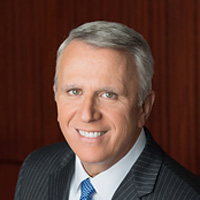How People with Pandemic-Induced Financial Fatigue Can Get Back on Track
When your current finances feel uncertain, it’s easy to lose focus on your long-term goals – like retirement. If you’re lost in the weeds right now, here’s how to find your way again.


People are worn out. They are trying to make it through the stress of the pandemic, a continually volatile market and record inflation. And, for many who are years from retirement, they have decades of work ahead of them.
These younger Americans are in the middle of their working years – those critical saving-for-retirement years. It’s not easy to keep those retirement goals in mind when current finances feel uncertain.
The new 2022 Retirement Risk Readiness study* from Allianz Life found that people who have yet to retire are much more concerned about their financial futures than retirees – particularly after two years of uncertainty with the pandemic.

Sign up for Kiplinger’s Free E-Newsletters
Profit and prosper with the best of expert advice on investing, taxes, retirement, personal finance and more - straight to your e-mail.
Profit and prosper with the best of expert advice - straight to your e-mail.
The big point: People further from retirement feel financially at risk.
The majority of younger Americans (particularly those more than 10 years from retirement) are more afraid of running out of money than death. In the study, 63% of non-retirees said they fear running out of money more than death. Meanwhile, just 46% of retirees had the same fear. All people are saving and investing in the same market. Yet, these younger Americans are much more worried about their financial future.
Actions taken during the pandemic could be one reason they don’t feel secure because, according to the study, non-retired Americans made some financial decisions during the pandemic that left them in a precarious position:
- 34% took cash out of investment accounts like a 401(k) or IRA.
- 39% reduced the amount of money they were putting into retirement accounts.
- 54% said they spent too much on non-necessities.
In general, people should refrain from touching retirement investment accounts until they leave the workforce. They should also maintain contributions to those accounts. But, these moves already happened – an opportunity lost. So, let’s focus on what people can do to address risks to their retirement security, starting today.
Here are some tips to get back, or stay, on track toward retirement goals. The proposed SECURE ACT 2.0 looks like it will pass at the time of this writing, and some of the provisions will help saving for retirement more attractive and affordable for younger pre-retirees.
Get back to basics
Sometimes you have to return to Finance 101. Re-examine your monthly income and expenses. Find out how much you can reasonably save – and then do it. Make a plan to pay off debt, especially high-interest or non-mortgage debt like credit card debt and car loans.
The hardest part about this process is that it involves work and brutal honesty. You have to write everything down – don’t expect you’ll remember everything. This is where commitment begins.
Then, start checking down the list of ways you can make those efforts work even harder for you. First consider putting those savings into a high-yield savings account. Once you have an emergency fund of around six months’ worth of expenses in cash, then you can start putting money into investment accounts.
If your employer offers a retirement savings plan, consider enrolling in it. Many companies also offer employees a match on contributions to a retirement account as part of their benefits package. Take full advantage of it. That means, if you make $50,000 a year and your company matches 5%, you could invest $2,500 into a 401(k) plan a year and automatically double that with another $2,500 from your employer. By the end of the year, you have just put 10% of your salary into retirement savings.
The proposed SECURE ACT 2.0 contains a provision that would provide for automatic enrollment for employees at a 3% contribution rate that will increase every year by 1%. Before this comes about, make sure you are comfortable with that amount. Also, if student loan debt is preventing you from being able to make contributions, there is currently a provision that would allow employers to match what you are paying in student loans with a contribution to your 401(k) or other employer plan. If the bill passes, you should ask about this.
You could also be eligible for tax credits for those contributions made to retirement accounts. The Saver’s Credit is available to some low-to-moderate income families. The Saver’s Credit gives a tax break for contributions made to an IRA or employer-sponsored retirement plan.
Automate your savings
The easiest way to save is not to have to think about it. This is one reason why 401(k) contributions are so great. They come out of your check each pay period without you having to make an active decision. This eliminates the temptation to spend, spend, spend. Particularly if you’re among the more than half of non-retirees who said they spent too much money on non-necessities during the pandemic.
Examining your budget could help figure out how you could change your monthly cash flow to put more money into savings and investment accounts. Automatic transfers from checking into these accounts will establish strong habits. You could start with something as simple as a $10 transfer into these types of accounts each week.
Catch-up contributions
Once you reach age 50, you can make catch-up contributions to IRAs and 401(k) plans. That means you can go beyond the normal limits to contributions allowed in those plans. This can help make up for not saving as much as you would have liked in the past.
The typical contribution limit for 401(k) plans is $20,500 in 2022. A catch-up contribution allows you to put another $6,500 into the plan. The proposed SECURE Act 2.0 has a provision to increase the catch up contributions to as much as $10,000 starting at age 62. There may also be a way your employer could match your Roth 401(k) contributions that could potentially add more tax-free retirement income for you later in life. You should consult with a tax adviser on whether this makes sense for you.
Manage your risk
Don’t be seduced by a potentially huge upside. If you’re feeling behind, you may want to protect the money that you are investing.
Sure, a riskier investment might have a bigger payoff over time than the traditional, safer choice. But, that means the risk to lose is higher too.
Consider creating a balanced portfolio of investments with varying levels of risks. That balance should include financial products like index funds, bonds and annuities that historically carry less risk. Investments that offer some risk mitigation, such as buffered (ETFs), or fixed indexed or registered index linked annuities (RILAs) with buffers could also be considered.
As you age, the more you should seek to control risk in your portfolio. Oftentimes these buffered products are a good compromise between a fixed investment that is not likely to keep pace with inflation and investing in something like stocks, which have inherent risks or are subject to volatility. Talk over your options with your financial adviser to come up with a balance between the need for growth and your ability or willingness to accept a certain level of risk.
Make more money
Between savings taking a back seat and record-setting inflation, you might just need to make more money to right your financial strategy. Sometimes the only way to save more is to make more.
Now might be the time to ask for a raise or look for a new, higher paying job. The labor market is in your favor with companies fighting to attract and retain talent. The study also found that 53% of non-retirees have had to or expect to find a job that pays more money due to the rising cost of living, so you’re not alone if you fall into this camp.
Use your increased earnings to increase your savings. Sure, it means you can spend more elsewhere too. Just be aware of lifestyle creep detracting from your future goals.
Create a long-term plan and consult a professional
Creating a long-term financial plan will help you think in detail about what you want those 20 to 30 retired years to look. The most important thing is that it has to be written down. Having a plan in your head does not work. While there is online software that can help, you really need to work with a professional who will create a plan for you.
This takes work, which is why many people don’t do it. However, after you put in the initial effort, your plan is an invaluable asset that you can refer to, adjust and find comfort in as you move toward and through retirement.
A good written plan will also account for risks to that ideal future in retirement. Risks like volatility, inflation and longevity all pose a threat to those plans. You can incorporate financial strategies that can mitigate those risks.
Creating this document will determine strategies to set yourself up to attain that retirement lifestyle you deserve. Your actions now will dictate how you will secure those retirement goals. There is no one-size-fits-all financial plan. These tips are in the “fits most” category. Your financial situation would benefit from the detailed assistance of a professional.
*Allianz Life Insurance Company of North America conducted an online survey, the 2022 Retirement Risk Readiness Study, in February 2022 with a nationally representative sample of 1,000 individuals age 25+ in the contiguous U.S. with an annual household income of $50k+ (single) / $75k+ (married/partnered) OR investable assets of $150k.
This content is for general educational purposes only. It is not, however, intended to provide fiduciary, tax or legal advice and cannot be used to avoid tax penalties or to promote, market, or recommend any tax plan or arrangement. Please note that Allianz Life Insurance Company of North America, its affiliated companies, and their representatives and employees do not give fiduciary, tax or legal advice. Clients are encouraged to consult their tax advisor or attorney for their particular situation
Allianz does not offer financial planning services.
Registered Index Linked Annuities are subject to investment risk, including possible loss of principal. Investment returns and principal value will fluctuate with market conditions so that units, upon distribution, may be worth more or less than the original cost.
Investing involves risk including possible loss of principal. There is no guarantee the funds will achieve their investment objectives and may not be suitable for all investors.
Guarantees are backed by the financial strength and claims-paying ability of the issuing insurance company. Variable annuity guarantees do not apply to the performance of the variable subaccounts, which will fluctuate with market conditions.
Products are issued by Allianz Life Insurance Company of North America. Variable products are distributed by its affiliate, Allianz Life Financial Services, LLC, member FINRA, 5701 Golden Hills Drive, Minneapolis, MN 55416-1297. 800.542.5427 www.allianzlife.com
Profit and prosper with the best of Kiplinger's advice on investing, taxes, retirement, personal finance and much more. Delivered daily. Enter your email in the box and click Sign Me Up.

Kelly LaVigne is vice president of advanced markets for Allianz Life Insurance Co., where he is responsible for the development of programs that assist financial professionals in serving clients with retirement, estate planning and tax-related strategies.
-
 Last Call for Fortnite Refunds: Parents Can Still File a Claim
Last Call for Fortnite Refunds: Parents Can Still File a ClaimThe FTC is sending out $126 million in refunds to families whose kids were charged for unwanted items in Fortnite — and there’s still time to file a claim.
-
 Stock Market Today: Stocks Swing as Trump Scraps Canada Trade Talks
Stock Market Today: Stocks Swing as Trump Scraps Canada Trade TalksDespite a mid-afternoon slip, the S&P 500 and Nasdaq ended the day at new record highs.
-
 Why Smart Retirees Are Ditching Traditional Financial Plans
Why Smart Retirees Are Ditching Traditional Financial PlansFinancial plans based purely on growth, like the 60/40 portfolio, are built for a different era. Today’s retirees need plans based on real-life risks and goals and that feature these four elements.
-
 To My Small Business: Well, I've Been Afraid of Changin', 'Cause I've Built My Life Around You
To My Small Business: Well, I've Been Afraid of Changin', 'Cause I've Built My Life Around YouWhile thinking about succession planning might feel like anticipating a landslide (here's to you, Fleetwood Mac), there are strategies you can implement to manage the uncertainty and the transition.
-
 These Are the Key Tariff Issues to Watch in Coming Months
These Are the Key Tariff Issues to Watch in Coming MonthsWhile they're not dominating headlines right now, tariffs are not over. Some key dates are coming up fast that could upend markets all over again.
-
 Technology Unleashes the Power of Year-Round Tax-Loss Harvesting
Technology Unleashes the Power of Year-Round Tax-Loss HarvestingTech advancements have made it possible to continuously monitor and rebalance portfolios, allowing for harvesting losses throughout the year rather than just once a year.
-
 The Fiduciary Firewall: An Expert's Five-Step Guide to Honest Financial Planning
The Fiduciary Firewall: An Expert's Five-Step Guide to Honest Financial PlanningArmed with education and awareness, you can avoid unethical people in the financial industry by seeking fee-only fiduciaries and sharing your knowledge with others.
-
 How Private Capital Could Be the Key to Rebuilding America
How Private Capital Could Be the Key to Rebuilding AmericaPrivate capital investment in infrastructure could be a more efficient and effective alternative to government funding, potentially stimulating the economy during uncertain times, creating jobs and delivering projects on time and within budget.
-
 Real Estate Bridge Funds: An Expert Guide to Investing in a Volatile Market
Real Estate Bridge Funds: An Expert Guide to Investing in a Volatile MarketInvestors looking for passive income are buying into these funds, which offer capital to borrowers for short-term financing.
-
 Bill Bought a Fridge, and Then His Nightmare Began
Bill Bought a Fridge, and Then His Nightmare BeganA Lowe's customer reached out to me after he encountered the retailer's 48-hour return window for major appliances when his brand-new fridge turned out to be defective.